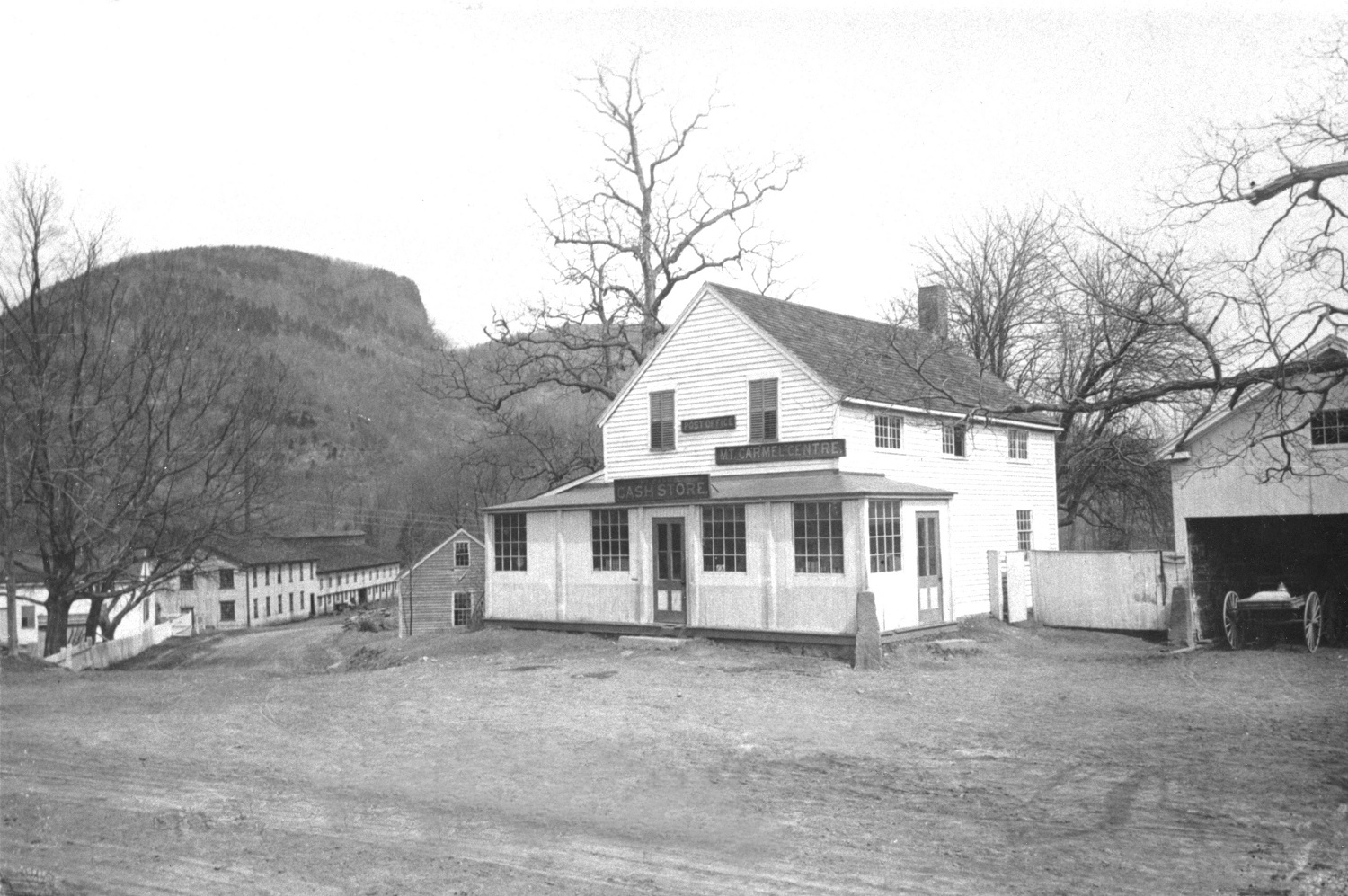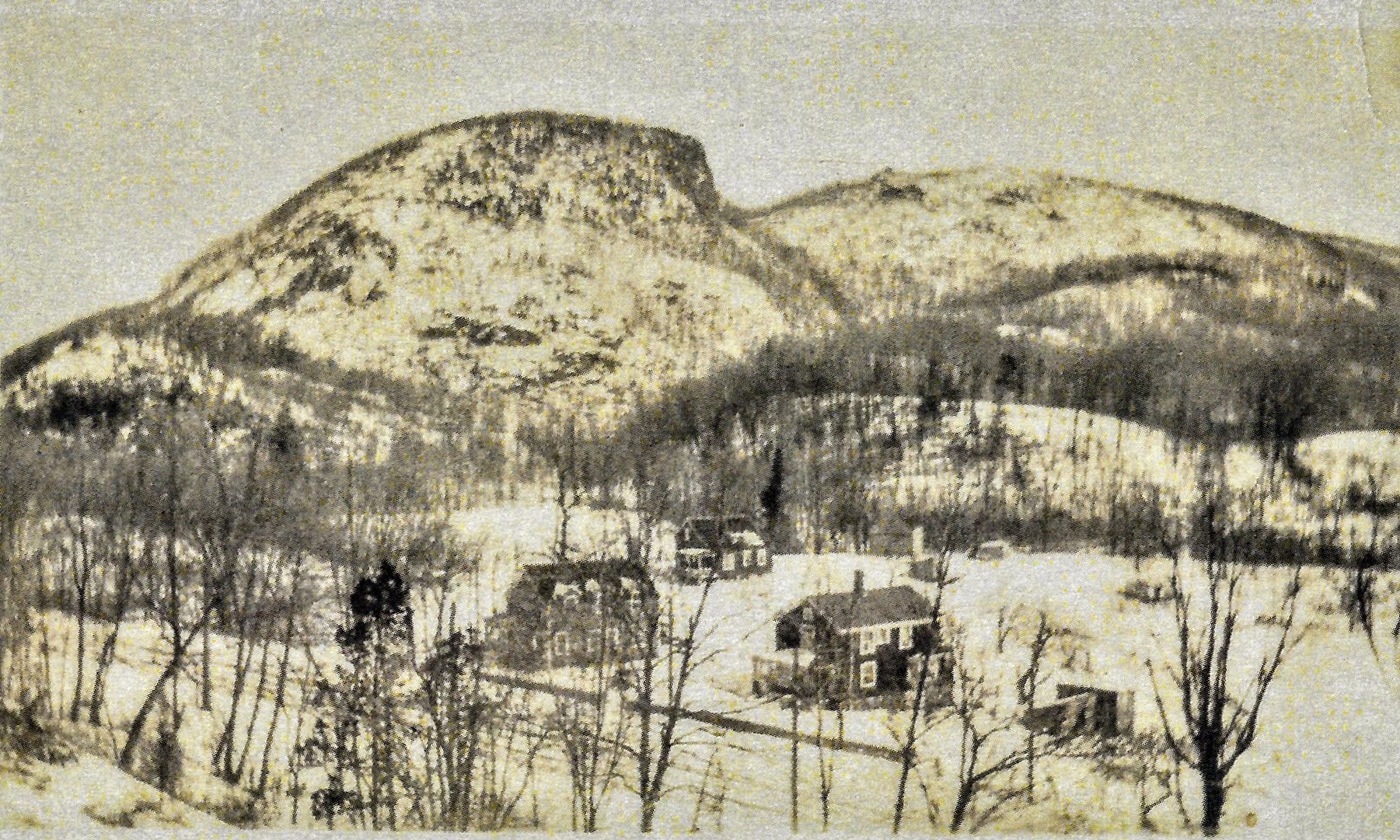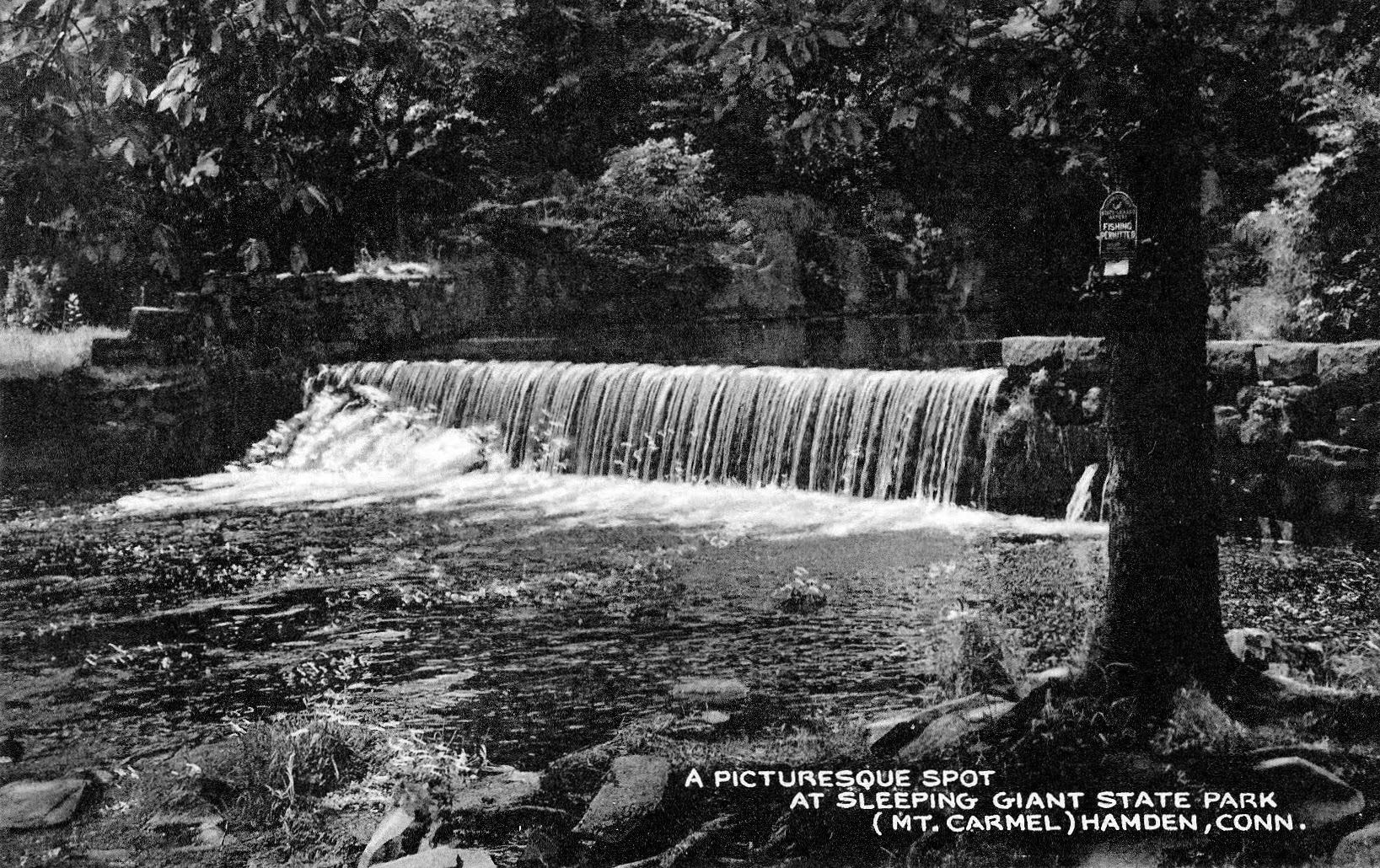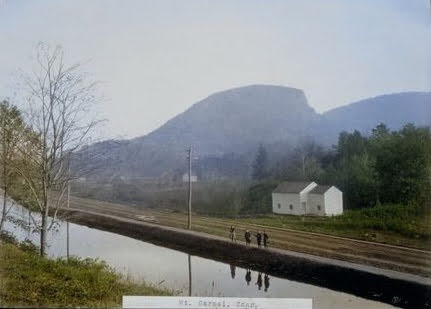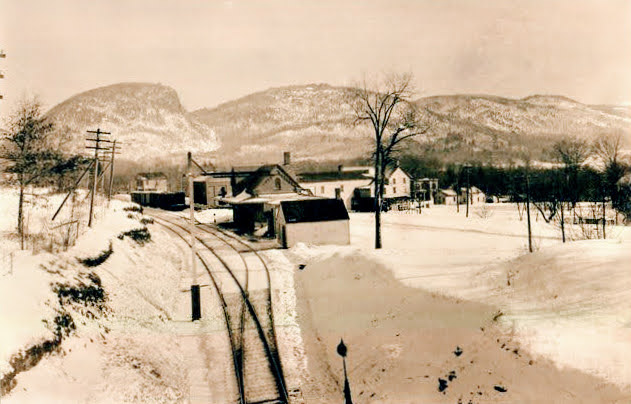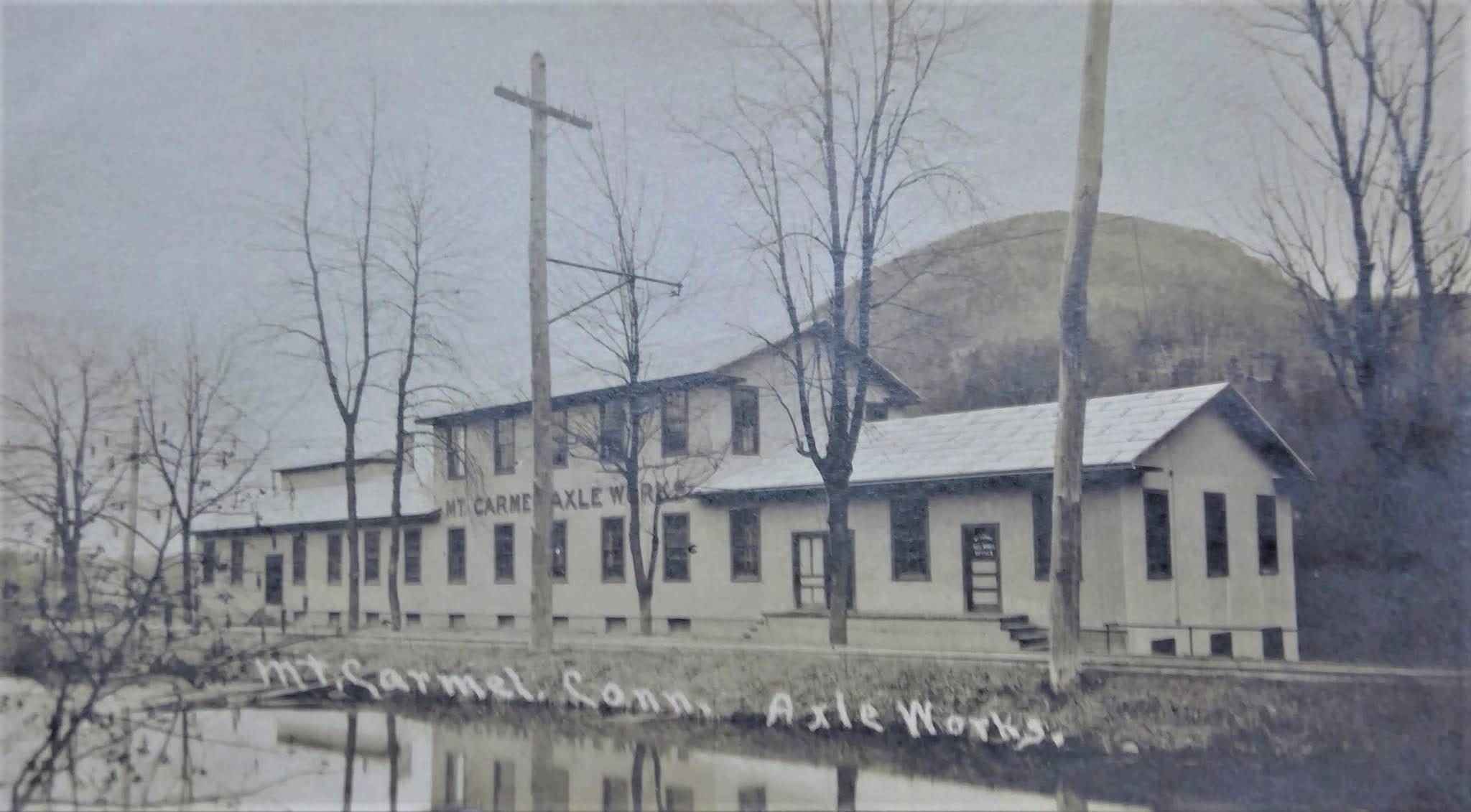Early Industry at the Giant
The neighborhood around the base of Sleeping Giant, Mount Carmel, is said to have been inspired by the biblical Mount Carmel in Israel. The name is believed to have been chosen due to the area’s picturesque and elevated landscape.
The area that would become Mount Carmel was initially settled in the 18th century, and grew into an industrial community whose history is intimately tied with the Sleeping Giant and Mill River.
Harnessing Hydropower
Although homesteaders began settling the area north of the New Haven Colony well prior to 1735, this is the year that industry reached the Giant. Joel Munson was offered two acres by the town in exchange for building a dam that could harness the power of the Mill River. Munson sited his project at a location known as “The Steps”, and within two years, the dam was built, a cartway was constructed across the top of the dam, and a grist mill and saw mill were established. This dam would be a critical piece of infrastructure for the region, including the axle factories described below. Remains of the dam can still be seen today, and a keen eye can still identify the spillway now carves through the adjoining woods.
The New Haven to Northampton Canal
The Farmington Canal, also known as the New Haven and Northampton Canal, was an intricate waterway that played a pivotal role in the early 19th century. Built between 1825 and 1835, it stretched over 80 miles from New Haven, CT to Northampton, MA. The canal was a marvel of engineering for its time, and served as an essential transportation route that facilitated trade and commerce in the region. The waterway was a lifeline for local communities, as it allowed goods such as timber, agricultural products, and coal to be transported efficiently. As the Farmington Canal’s importance waned with the advent of railroads, it was eventually abandoned.
Image courtesy of the CT Historical Society (1974.31.1.36). Colorized by Ethan Long.
From Water to Rails
The New Haven and Northampton Railroad follows the route of the Farmington Canal. The canal’s traffic didn’t meet expectations, leading to the decision to convert it into a railroad. In 1846, construction began on the railroad along the canal’s right-of-way, starting in New Haven and reaching Plainville, 27 miles (43 km) away, by the end of 1847. The line continued to expand, eventually reaching Massachusetts and its namesake city of Northampton in 1859. As the 20th century progressed, much of the railroad’s line was gradually abandoned, and only a few sections remain in use for freight service to this day. The majority of the abandoned right-of-way has found new life as part of the Farmington Canal Heritage Trail.
Image courtesy of the Dana Collection, New Haven Museum
The Axle Shops
After the abandonment of the canal and return of streams to their original flows, the Munson dam on the mill river regained utility. Mt. Carmel Axleworks relocated here in 1854, where it pioneered machinery-assisted iron carriage axle production, significantly impacting American transportation. Willis Miller, the factory’s owner, introduced a patented axle. The original building burned in January 1905, replaced by a new structure in 1907. In 1917, the second building also succumbed to fire. The site has a history rich in innovation and challenges, including fires and later occupation by the Liberty Cartridge Company (read on, HERE). Today, the stone foundations of these buildings are still visible near Whitney Avenue, along the Mill River.
Image courtesy of the Hamden Historical Society, MSS5/B/18B.
Mount Carmel Evolves…
With new industry, the neighborhood of Mount Carmel began to grow. As the industrial activities grew, residential communities began to spring up around the factories. Workers and their families settled in the area, leading to the establishment of a tight-knit community.
Over time, Mount Carmel evolved from its industrial origins into a more residential and suburban neighborhood. When quarrying started in the giant, the community helped oppose the blasting of the Giant’s head. That story is continued HERE…
Image courtesy of the Hamden Historical Society, MSS5/B/15.
